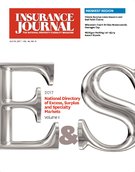Wisconsin’s cap on noneconomic damages in medical malpractice cases is unconstitutional because it puts severely injured patients at a disadvantage, a state appeals court has ruled.
The 1st District Court of Appeals’ decision clears the way for unlimited compensation for pain, emotional anguish and loss of enjoyment or reputation.
The ruling stems from a case involving Ascaris Mayo. According to court documents, doctors didn’t tell her she was suffering from a septic infection and as a result she fell into a coma and had to have all four of her limbs amputated after gangrene set in.
Mayo and her husband sued the doctors and the state malpractice compensation fund, an account doctors pay into to cover malpractice awards. A jury awarded her $15 million in noneconomic damages and her husband $1.5 million for loss of companionship.
Lawyers for the state’s Injured Patients and Families Compensation Fund (Fund) moved to reduce the award to $750,000, the maximum compensation for noneconomic damages allowed under state statutes. The Mayos countered that the cap is unconstitutional.
A Milwaukee County judge sided with the Mayos, finding the cap was unconstitutional as applied in their case. The appeals court went further, ruling the cap is unconstitutional on its face. The court found the cap allows full awards for less severely injured patients but results in reduced awards for the catastrophically injured, amounting to an equal protection violation.
The court went on to say the cap doesn’t achieve any of the Legislature’s stated goals in adopting it.
Lawmakers included language with the cap that said it was designed to encourage doctors to practice in Wisconsin, contain health care costs by discouraging “defensive medicine” and providing certainty in damage awards, as well as protect the solvency of the state compensation fund.
The number of doctors participating in the fund has grown every year and there’s no data indicating a cap has any effect on physician retention anywhere, the court said. Doctors don’t face any personal liability thanks to the state fund, which would appear to eliminate the need for defensive medicine. As for the fund’s solvency, claims against it have decreased since 2005 and as of 2014 the fund’s assets stood at about $1.2 billion, the court said.
“We are left with literally no rational factual basis in the record before us which supports the legislature’s determination that the $750,000 limitation on noneconomic damages is necessary or appropriate to promote any of the stated legislative objectives,” the court’s opinion said.
Attorneys for the fund and the doctors in the Mayo case didn’t immediately respond to email messages seeking comment. A voicemail left at the Wisconsin Medical Society seeking comment on the decision’s impact also wasn’t immediately returned.
Was this article valuable?
Here are more articles you may enjoy.


 Trump’s Bond Insurer Tells Judge Shortfall Is ‘Inconceivable’
Trump’s Bond Insurer Tells Judge Shortfall Is ‘Inconceivable’  USAA to Lay Off 220 Employees
USAA to Lay Off 220 Employees  Harvard Study Again Stirs the Pot on Demotech Ratings of Florida Carriers
Harvard Study Again Stirs the Pot on Demotech Ratings of Florida Carriers  Supreme Court Makes It Easier to Sue for Job Discrimination
Supreme Court Makes It Easier to Sue for Job Discrimination 


